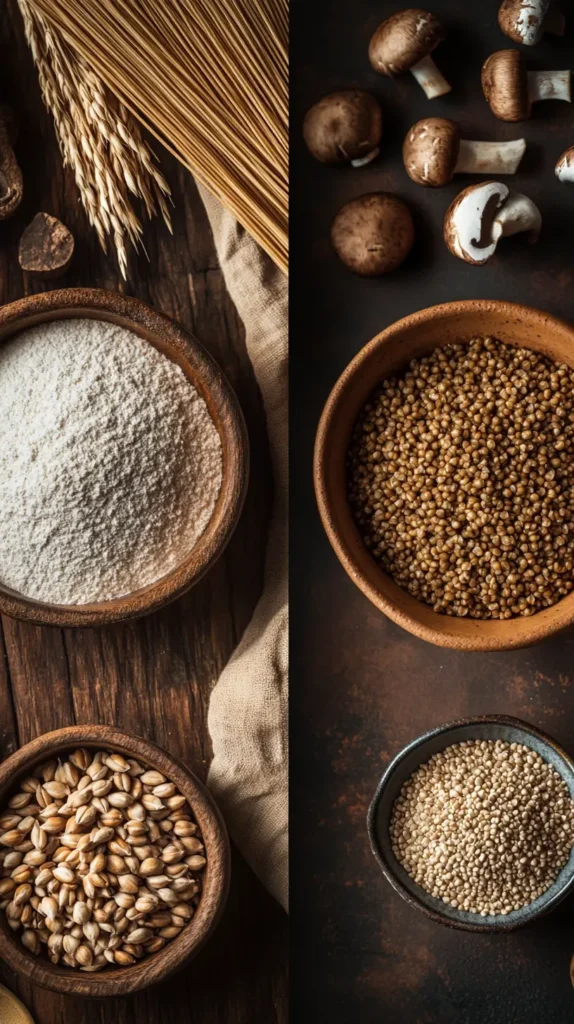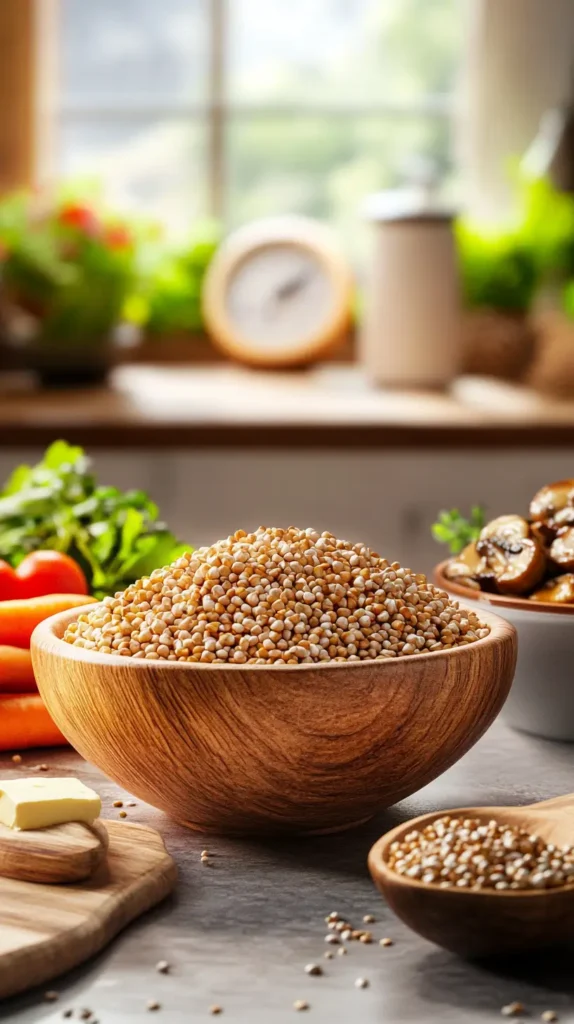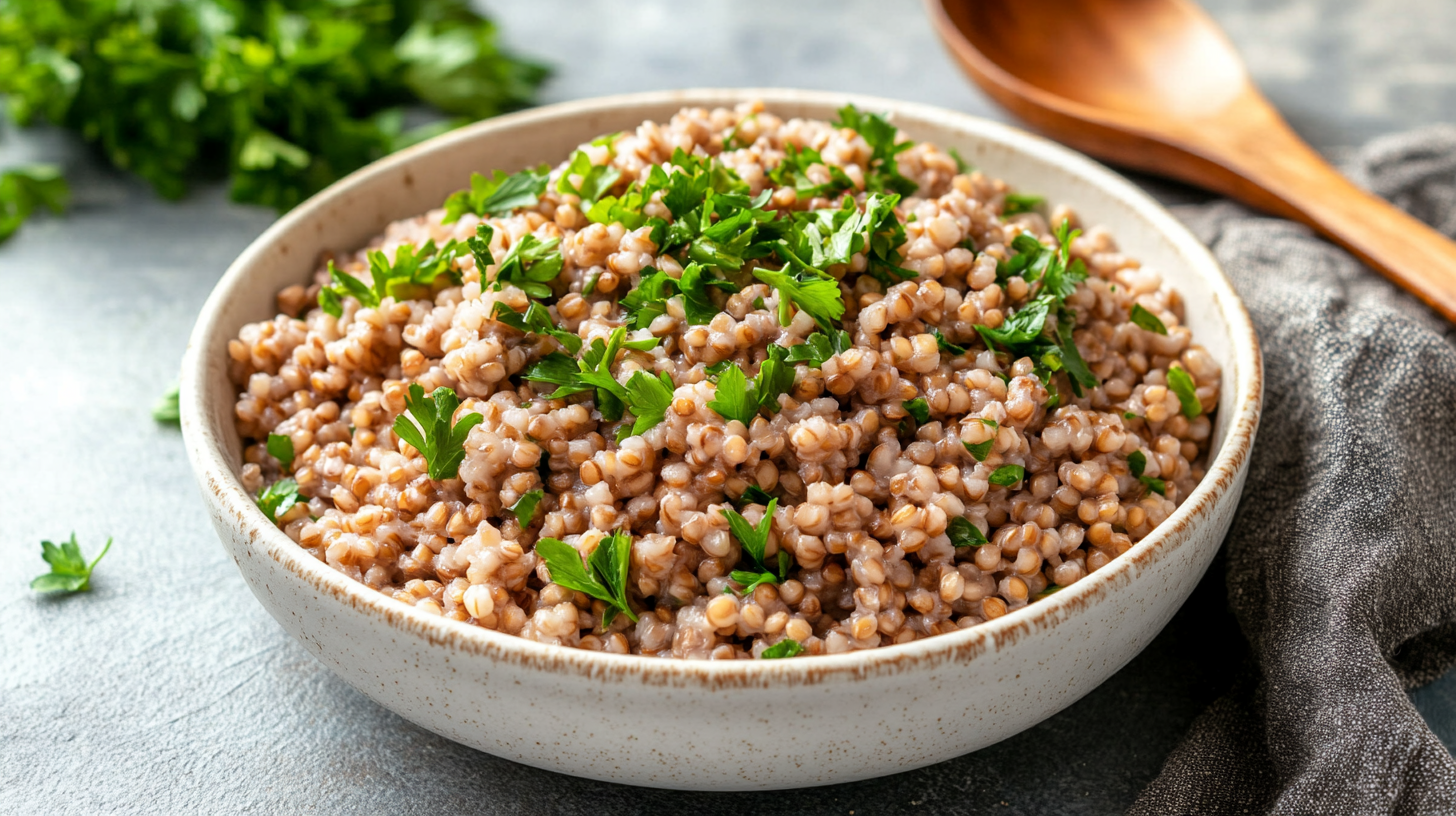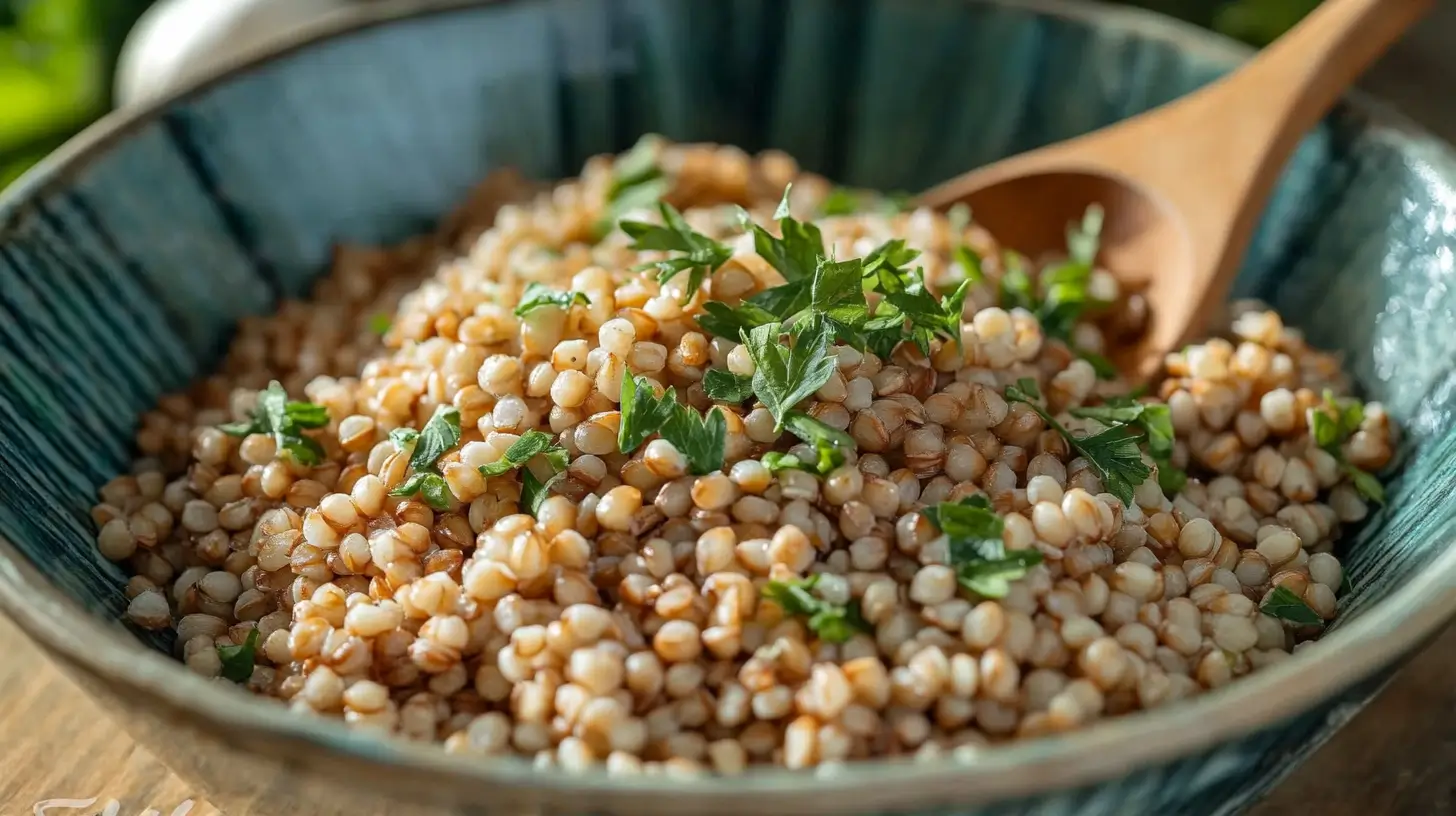What Is the Difference Between Buckwheat and Kasha? Buckwheat and kasha are two terms often used interchangeably, but they are distinct in several ways. Both are staples in various cuisines and are appreciated for their versatility and nutritional benefits. This article delves into the differences and similarities, covering everything from origins to culinary uses.
Understanding Buckwheat: A Comprehensive Overview
Origins and History of Buckwheat
Buckwheat, despite its name, is not related to wheat. It is a seed from the Fagopyrum esculentum plant, cultivated for centuries in Asia and Europe. Originating in Southeast Asia, buckwheat spread through Central Asia and into Europe during the Middle Ages, becoming a key ingredient in many traditional dishes.
Buckwheat thrives in poor soils and harsh climates, making it a valuable crop in areas where other grains fail. Historically, it has been a dietary staple for farmers and rural communities, particularly in Russia, China, and Eastern Europe. Its resilience and adaptability underscore its global culinary importance.
Nutritional Profile of Buckwheat
Buckwheat is celebrated for its dense nutritional profile, making it a superfood in many diets. It is gluten-free, rich in protein, and an excellent source of essential amino acids like lysine. Additionally, it is high in dietary fiber, which supports digestion and gut health.
Nutritionally, buckwheat provides:
- Complex carbohydrates for sustained energy.
- Minerals such as magnesium, manganese, and copper.
- Antioxidants like rutin, which supports cardiovascular health.
These qualities make buckwheat a preferred choice for health-conscious individuals and those following gluten-free diets.
Culinary Uses of Buckwheat
Buckwheat’s versatility shines in its culinary applications. The seeds, also known as groats, can be cooked like rice or ground into flour for various recipes. Popular uses include:
- Pancakes: Buckwheat flour is the base for savory and sweet pancakes.
- Noodles: Japanese soba noodles are a traditional buckwheat-based dish.
- Porridges: Buckwheat groats make hearty and nutritious breakfasts.
This foundational understanding of buckwheat is key to grasping what is the difference between buckwheat and kasha, which we’ll explore next.
Decoding Kasha: An In-Depth Analysis
To fully understand what is the difference between buckwheat and kasha, it’s important to explore what defines kasha on its own.
What Exactly is Kasha?
Kasha refers specifically to roasted buckwheat groats, which develop a nutty flavor and deep aroma during the roasting process. This transformation gives kasha a richer, more intense profile compared to raw buckwheat, making it a staple in Russian and Eastern European dishes.
Although “kasha” is commonly used to mean roasted buckwheat, the term more broadly refers to porridge-like dishes made from various grains or seeds in Slavic cuisines. Still, globally, roasted buckwheat is the most widely recognized version of kasha.
Historical Significance of Kasha in Cuisine
To appreciate what is the difference between buckwheat and kasha, it’s useful to consider their cultural context. Kasha has been a cornerstone of Eastern European diets for centuries. Its affordability, nutrition, and long shelf life made it accessible to all—from peasants to aristocrats.
Traditionally served with butter, onions, mushrooms, or even milk, kasha reflects more than sustenance—it represents resilience and simplicity, deeply woven into the culinary identity of the region.
Types of Kasha: A Guide
Kasha comes in various forms, depending on the roasting level and preparation method:
- Lightly roasted kasha: Mild in flavor and quicker to cook.
- Dark roasted kasha: Intense nuttiness and robust taste.
- Whole groats or cracked kasha: Textural differences for different dishes.
Understanding these differences helps clarify what is the difference between buckwheat and kasha, especially when choosing ingredients for porridge, side dishes, or pilafs.
Key Differences Between Buckwheat and Kasha
Understanding what is the difference between buckwheat and kasha comes down to processing, flavor, and culinary use. Though both come from the same plant, their preparation methods create distinct outcomes in the kitchen.
Processing and Preparation of Buckwheat vs. Kasha
The core difference lies in how each is processed:
- Buckwheat refers to the raw, unroasted seeds (groats) of the buckwheat plant.
- Kasha is made by roasting those groats, which deepens their flavor and alters their texture.
While buckwheat can be used in its natural form, kasha undergoes a transformation during roasting, making it more aromatic and robust.
Comparing Flavor Profiles and Textures of Buckwheat and Kasha
To fully grasp what is the difference between buckwheat and kasha, consider how they taste and feel:
- Buckwheat: Mild, earthy, and tender—perfect for recipes where a neutral base is needed (e.g., crepes or breakfast bowls).
- Kasha: Rich, nutty, and slightly chewy—ideal for savory dishes like pilafs, porridges, or grain-based stuffings.
Each serves a unique purpose in the kitchen based on these differences.
Common Dishes Featuring Buckwheat and Kasha
Both ingredients appear in culturally significant dishes around the world:
- Buckwheat: Used in soba noodles, gluten-free pancakes, and nourishing breakfast bowls.
- Kasha: A star ingredient in Eastern European classics like kasha varnishkes and mushroom-stuffed grain dishes.
By recognizing these culinary roles, it becomes clear what is the difference between buckwheat and kasha, and how to best use each in your recipes.

Nutritional Comparison: What Is the Difference Between Buckwheat and Kasha?
To truly understand what is the difference between buckwheat and kasha, it’s important to explore how the roasting process affects their nutritional profiles. While they originate from the same seed, their nutrient compositions can vary slightly after processing.
Macronutrient Differences in Buckwheat and Kasha
Both buckwheat and kasha are excellent sources of plant-based nutrition, but roasting introduces subtle changes:
- Calories: Kasha may have slightly fewer calories due to moisture loss during roasting.
- Protein and Fiber: Both are rich in protein and dietary fiber, supporting muscle maintenance and healthy digestion.
- Carbohydrates: Provide slow-digesting energy, making both options suitable for sustained activity.
So when asking what is the difference between buckwheat and kasha, nutritionally they are very similar—with roasting causing only minor macronutrient shifts.
Vitamins, Minerals, and Antioxidants in Buckwheat and Kasha
Both forms provide vital micronutrients and antioxidants that support overall health:
- Magnesium: Essential for nerve function and bone strength.
- Iron: Supports oxygen circulation and energy production.
- Antioxidants:Kasha may contain slightly more antioxidants due to the heat-induced enhancement from roasting.
Whether you choose raw buckwheat or roasted kasha, both offer impressive health benefits. Their nutritional value is one more reason to explore what is the difference between buckwheat and kasha and how each fits into your diet.
Cultural and Culinary Importance: What Is the Difference Between Buckwheat and Kasha?
To fully appreciate what is the difference between buckwheat and kasha, it’s helpful to examine their cultural roles in traditional cuisines. While they originate from the same seed, their culinary identities and uses differ around the world.
Buckwheat in Global Cuisines Compared to Kasha
Buckwheat is a versatile ingredient found in a variety of global dishes thanks to its mild, earthy flavor and nutritional value:
- Asia: In Japan, buckwheat flour is used to make soba noodles, a national staple. In China, buckwheat pancakes and dumplings are common.
- Europe: French cuisine features buckwheat in savory crepes (galettes), while Russian blinis often include buckwheat flour.
- America: Buckwheat is popular in hearty breakfast pancakes and is often featured in gluten-free recipes.
These examples highlight buckwheat’s adaptability across different culinary traditions.
Kasha’s Role in Eastern European Traditions and Its Difference From Buckwheat
When exploring what is the difference between buckwheat and kasha, it’s clear that kasha has a much more defined cultural identity—especially in Eastern Europe. Kasha is the roasted form of buckwheat and carries deep historical and emotional significance in many households:
- Russia: Kasha is often served with mushrooms, onions, and butter as a side dish or a main course.
- Ukraine: Buckwheat kasha is a festive dish, often combined with meat or vegetables.
- Jewish Cuisine: Kasha varnishkes, a blend of kasha and bowtie pasta, is a classic dish with deep cultural ties.
In these traditions, kasha isn’t just food—it’s a symbol of comfort, heritage, and resilience. This distinction adds cultural depth to what is the difference between buckwheat and kasha, showing that while they start from the same source, their uses and meanings are far from identical.
Health Benefits of Including Buckwheat and Kasha in Your Diet
Understanding what is the difference between buckwheat and kasha goes beyond taste and texture—it also includes their unique health benefits. Both are nutrient-dense options, but their preparation methods create subtle nutritional distinctions.
Benefits of Buckwheat Compared to Kasha
Incorporating buckwheat into your diet can yield numerous health advantages:
- Heart Health: Rich in rutin, an antioxidant, buckwheat supports cardiovascular wellness by reducing blood pressure.
- Gluten-Free Nutrition: Buckwheat is an excellent choice for those with celiac disease or gluten sensitivity.
- Digestive Health: Its high fiber content aids digestion and promotes gut health.
These qualities make buckwheat a highly nutritious addition to a balanced diet.
Unique Benefits of Kasha Over Buckwheat
When considering what is the difference between buckwheat and kasha, it’s important to note how roasting changes kasha’s nutritional profile:
- Enhanced Antioxidant Content: Roasting amplifies kasha’s antioxidant levels, providing extra protection against oxidative stress.
- Energy Boost: The nutty flavor and complex carbohydrates in kasha provide a sustained energy source.
- Weight Management: High protein and fiber content help maintain satiety, reducing overeating.
Kasha’s roasted nature makes it slightly richer in flavor and nutrients, complementing various dietary needs.

Cooking and Storage: What Is the Difference Between Buckwheat and Kasha?
When exploring what is the difference between buckwheat and kasha, it’s also helpful to understand how each is cooked and stored. While both come from the same seed, their preparation techniques differ due to the roasting process.
Cooking Techniques for Buckwheat
Buckwheat is easy to prepare and incredibly versatile across meal types:
- Boiling: Cook buckwheat groats in water or broth in a 1:2 ratio (groats to liquid) for about 15-20 minutes until tender.
- Steaming: For a fluffier texture, rinse the groats, toast them briefly, and steam.
- Baking: Use buckwheat flour in pancakes, muffins, or bread for a gluten-free alternative.
Pairing buckwheat with vegetables, sauces, or proteins enhances its subtle, earthy flavor and makes it a flexible ingredient for both sweet and savory dishes.
Cooking Techniques for Kasha
Kasha’s roasted character brings out a more intense flavor and requires slightly different cooking methods:
- Toasting: For deeper flavor, toast kasha in a dry pan before cooking.
- Simmering: Cook kasha in a 1:2 ratio with water or broth. Simmer for 10-15 minutes until the liquid is absorbed.
- Pilafs & Sides: Combine kasha with sautéed onions, mushrooms, or nuts for hearty side dishes or mains
This preparation highlights the nutty, robust flavor of kasha—one of the key points when asking what is the difference between buckwheat and kasha in practical use.
Storage Tips for Buckwheat vs. Kasha
Storing both ingredients properly maintains freshness and quality:
- Cool, Dry Place: Store in airtight containers to protect from moisture and pests.
- Refrigeration: Extend freshness by keeping buckwheat and kasha in the refrigerator, especially in humid climates.
- Freezing: For long-term storage, freeze in sealed bags for up to six months.
These storage tips ensure your buckwheat and kasha remain ready to cook, whenever inspiration strikes.
FAQs
Can I substitute kasha for buckwheat?
Yes, you can substitute kasha for buckwheat in many recipes, but it depends on the dish and the flavor you’re aiming for. Kasha is simply roasted buckwheat, which gives it a deeper, nuttier, and more robust flavor compared to the milder, earthier taste of raw buckwheat.
In savory dishes like pilafs, soups, or grain-based sides, kasha makes an excellent swap—the toasty flavor can even elevate the recipe. However, for baking or dishes that benefit from a more neutral profile, such as pancakes or crepes, raw buckwheat or buckwheat flour may be the better choice.
Keep in mind that kasha typically cooks faster due to the roasting process, so you may need to adjust the cooking time slightly. While the substitution usually works well, always consider the impact on flavor and texture to ensure the best results for your dish.
Are kasha and buckwheat the same?
Kasha and buckwheat are related but not the same. Buckwheat refers to the raw, unprocessed seeds (groats) of the buckwheat plant, while kasha specifically refers to roasted buckwheat groats. The roasting process gives kasha a nutty, intense flavor and a slightly firmer texture compared to the milder and softer profile of raw buckwheat. While both are gluten-free and nutritionally similar, their uses in cooking often differ. Buckwheat is versatile and used in various forms, including flour for baking or whole groats for porridges and salads. Kasha, with its rich taste, is more commonly featured in savory dishes, particularly in Eastern European cuisine. Understanding these distinctions allows you to choose the right ingredient for your culinary needs.
Why is buckwheat not a grain?
Buckwheat is not a grain because it is not derived from grass plants like wheat, barley, or rice. Instead, it is the seed of a flowering plant in the Polygonaceae family, making it a “pseudo-grain.” Despite its grain-like uses, buckwheat is botanically closer to seeds such as quinoa and amaranth. This classification is significant for people with gluten sensitivities or celiac disease since buckwheat is naturally gluten-free. Its grain-like texture and versatility, however, make it a popular substitute for true grains in dishes like porridge, noodles, and baked goods. While it mimics the culinary qualities of grains, its unique botanical origins set it apart, offering distinct nutritional and dietary benefits, such as high protein content and essential amino acids.
What is cooked buckwheat called?
Cooked buckwheat is commonly referred to as buckwheat groats or, if roasted before cooking, kasha. When prepared, the groats take on a tender yet slightly chewy texture, making them a popular base for various dishes. In Eastern European cuisine, roasted and cooked buckwheat is called kasha, and it’s often served as a side dish or combined with ingredients like mushrooms, onions, or butter. Unroasted cooked buckwheat, on the other hand, is milder in flavor and used in breakfast bowls, salads, or as a rice substitute. Regardless of preparation, cooked buckwheat is celebrated for its nutritional value, offering high protein, fiber, and essential minerals while remaining gluten-free. Its versatility allows it to fit seamlessly into both savory and sweet recipes.
Conclusion: Embracing the Versatility of Buckwheat and Kasha
What is the difference between buckwheat and kasha? It comes down to more than just roasting—it’s about flavor, tradition, nutrition, and culinary purpose. Buckwheat, with its mild and adaptable profile, fits seamlessly into sweet and savory recipes around the world. Kasha, on the other hand, brings depth, warmth, and cultural richness through its robust, roasted flavor.
Both ingredients are gluten-free, nutrient-dense, and easy to prepare, making them excellent additions to any health-conscious kitchen. By understanding what is the difference between buckwheat and kasha, you can make more informed choices in your cooking and confidently enjoy their unique contributions to global cuisine.





